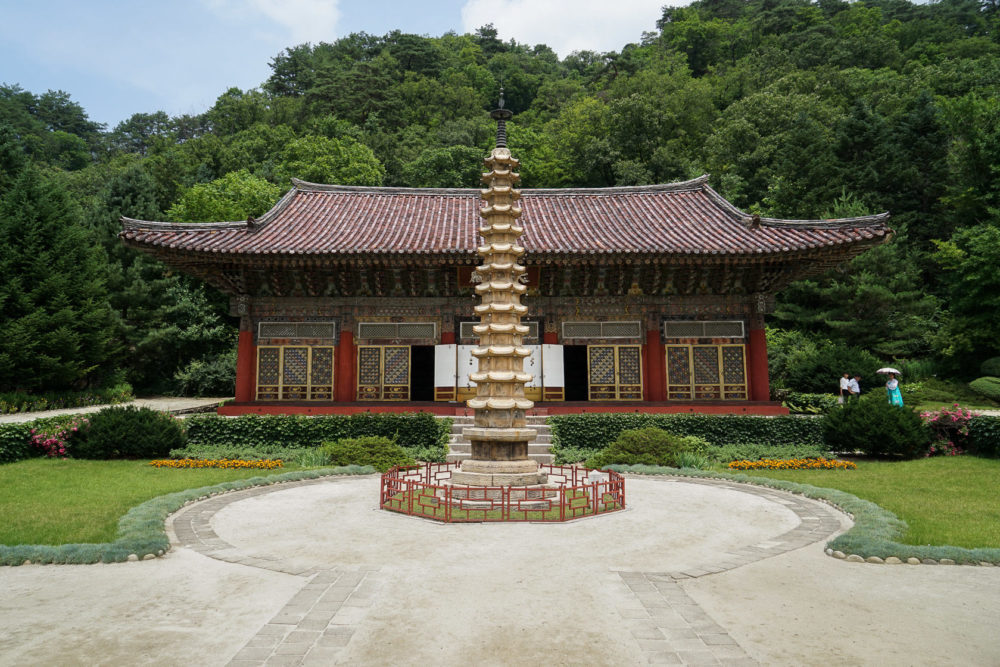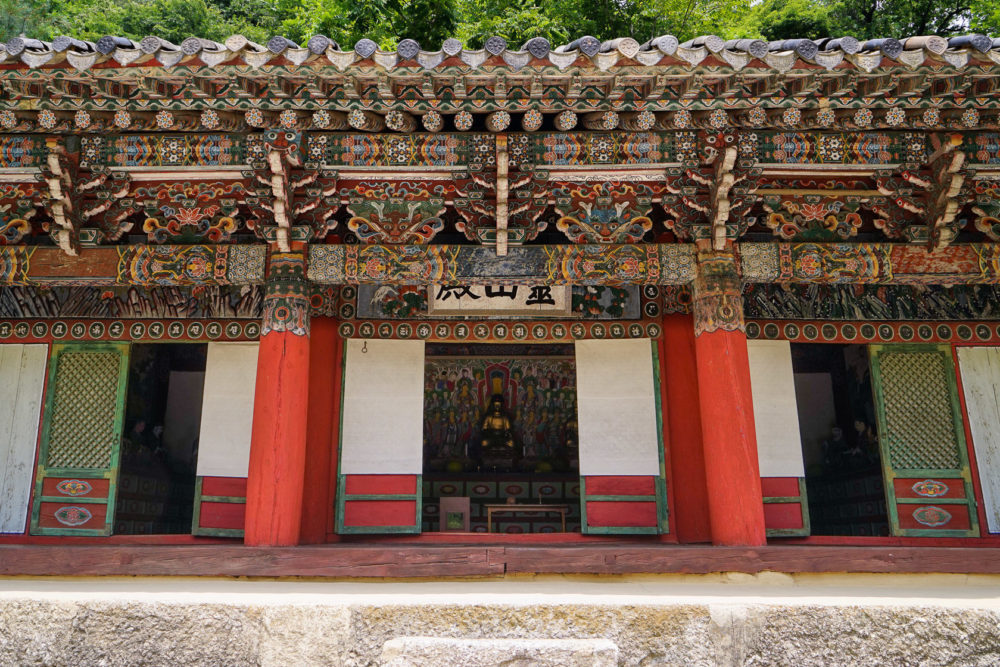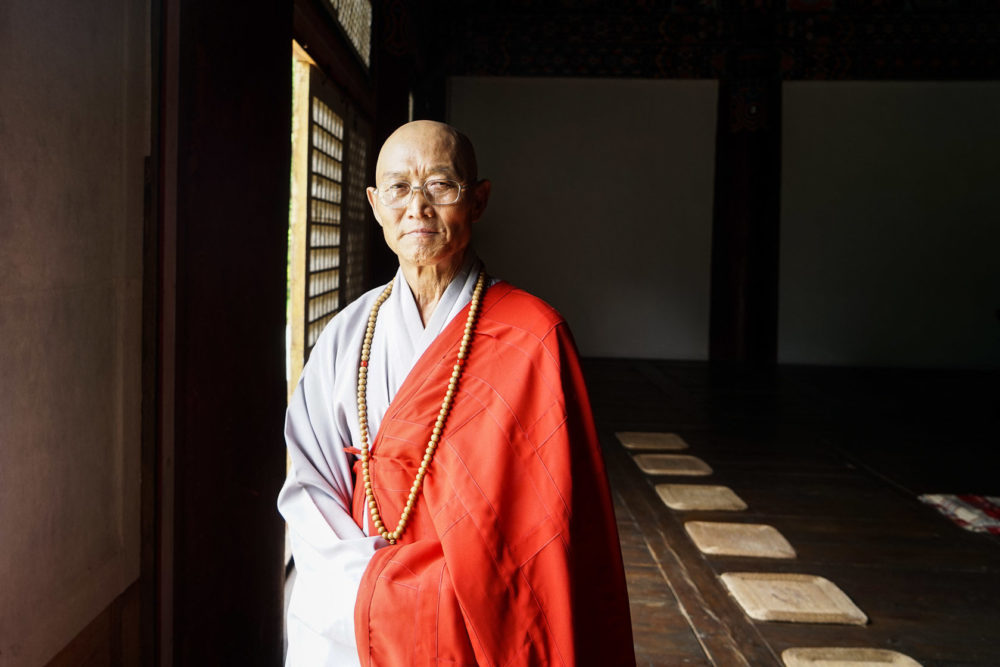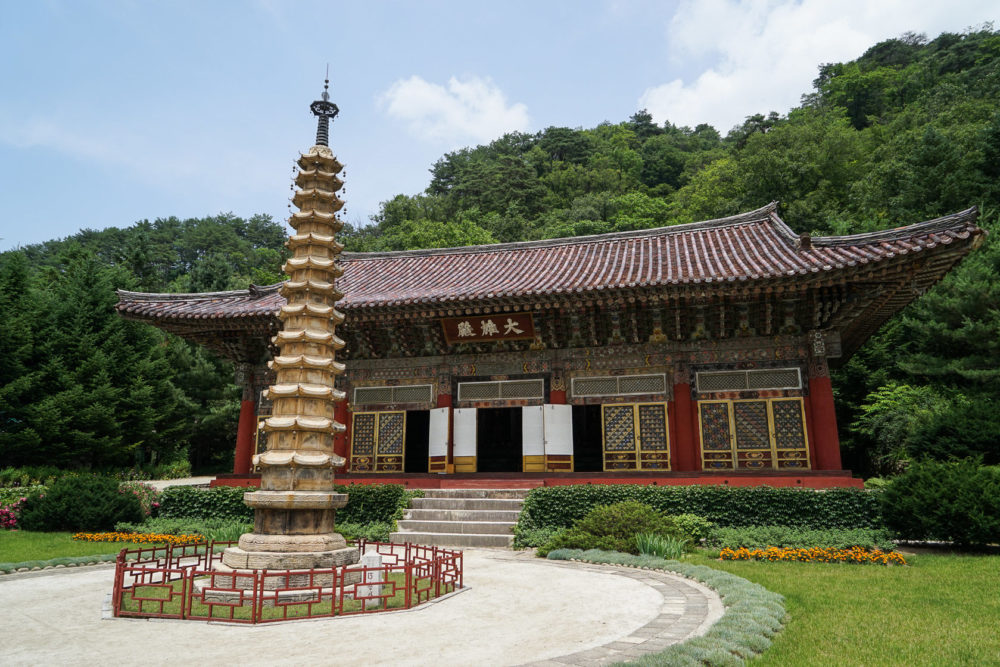Pohyon Temple, nestled in the wilderness of Mt. Myohyang, is one of North Korea’s most famous Buddhist temples. Built in the 11th century during the Koryo Dynasty, it became the centre of Buddhism in the regions north of the Chongchon River. The temple has been rebuilt three times since its initial construction and has a long history of enduring warfare, including serving as a stronghold against the Japanese 400 years ago. During the Korean War, the temple suffered extensive damage, losing half of its 24 buildings, many of which have since been rebuilt.
The site is a serene place for a walk, picturesque with gardens of bright flowers complementing the early Korean architecture and Mt. Myohyang as its backdrop. The temple grounds are designated as one of North Korea’s national treasures and also host a collection of other significant historical and cultural artefacts. Among the most famous is the Sokka Pagoda, a 10-meter-tall structure adorned with 104 bronze bells, located in the central courtyard and surrounded by elaborately named gates, such as the Gate of Four Heavenly Kings.
Pohyon Temple remains active with practicing Korean Buddhist monks. Visitors are welcome to enter the Taeung Hall after removing their shoes to partake in ritual. The 20 or so monks residing at the temple are well-versed in its history and are often enthusiastic about sharing their knowledge and chatting to visitors.
North Korea is officially atheist and strictly aligned with the Juche ideology pioneered by Kim Il Sung, and it permits only a small amount of religious activity. Those who practice must be approved to do so, including the monks at Pohyon Temple.




